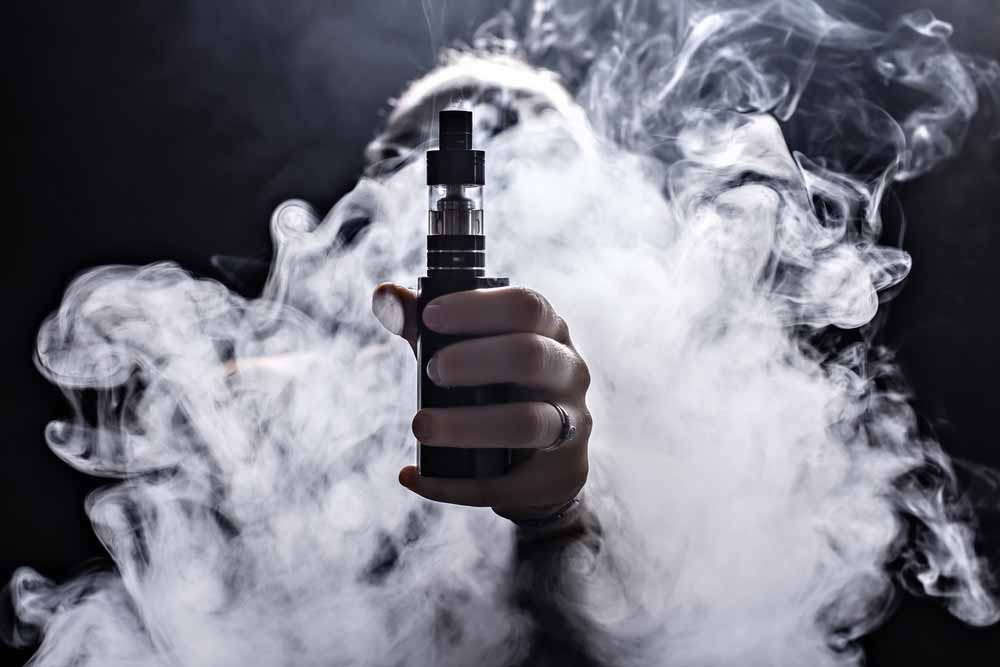The potential health risks of vaping – the use of e-cigarettes to deliver nicotine or cannabinoids as a vapor instead of smoke – are now capturing headlines in the U.S. Considered by many to be a safer alternative to smoking, vaping has become a popular pastime in recent years, particularly among teens and young adults.
A recent outbreak of lung injuries, however, has sparked growing concern about vaping-related complications. RGA’s Dr. Dave Rengachary, Senior Vice President and Chief Medical Director, U.S. Mortality Markets, discusses what is known, and not known, about this spike in sickness, and the insurance implications.
1. What is known about the problem?
In June of 2019, the Departments of Health in Illinois and Wisconsin began to receive reports of lung injury in patients who shared a history of vaping within 90 days of developing symptoms. As of this writing, the U.S. Centers for Disease Control and Prevention (CDC) reports 1,080 cases of reported vaping-related lung injury and 18 subsequent deaths. Both of these figures have risen rather precipitously since the first cases were described (over 270 cases in the last week), with no signs of a plateau. There has been no evidence of an infectious process related to these injuries.
2. What is the most common clinical presentation?
The clinical symptoms are consistent with an inhalation injury. Patients most commonly reported respiratory (98%), constitutional (fever, chills, fatigue), and gastrointestinal symptoms at presentation. These individuals then often progressed to develop acute respiratory distress, ultimately requiring intubation and mechanical ventilation in roughly a third of the cases. Both radiographically and pathologically, a wide variety of pneumonitis patterns have been reported, including lipophilic pneumonia, hypersensitivity pneumonitis, and eosinophilic pneumonia.
3. Who is at greatest risk?
70% of reported cases are male and 80% are below the age of 35. 78% of those afflicted used THC products and 37% used THC exclusively. Black market vaping products have been frequently reported, though again this has not been a consistent finding. This does appear to more commonly affect those who are newer to the habit.
4. What is not known about problem?
This outbreak remains an epidemiological mystery. E-cigarettes have been available well over 10 years without such case descriptions. Further, it is not clear why cases have been essentially limited to the United States, but concerns are rising elsewhere including Canada and the U.K. These factors point toward the likelihood of a chemical contaminant, although no single chemical has been consistent across the products identified, in part as there has not been consistency in the reported products themselves. Some have implicated vitamin E acetate oil as a potential culprit given its identification in cannabis samples from diseased patients. The theory is that the oil is not vaporizing appropriately, thus entering the lungs and triggering a lipophilic pneumonia.
5. How does this outbreak affect underwriting vaping risk?
While we are closely monitoring the situation, RGA’s underwriting stance on vaping has not changed. We categorize vapers as “smokers” given that urine cotinine cannot reliably distinguish traditionally smoked tobacco from e-cigarettes. While the number of those affected by vaping-related complications is rising, the absolute risk of death as compared to the 50+ million exposures could reasonably be considered within the risk tolerance of a smoker status. We could also envision a more cautious approach in an individual who meets the early profile of those with lipophilic pneumonias-related vaping: young/teen male, comorbid or isolated vaping of marijuana, relatively new to the habit. This profile is relatively rare in insured population applications.
We are hopeful that this outbreak results in a greater regulatory framework for vaping ingredients. We welcome the recent moves toward elimination of flavored e-cigarettes as perhaps the greatest risk of vaping is introducing nicotine addiction in young individuals who may progress to traditional tobacco.



